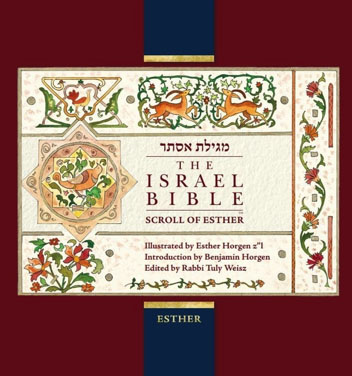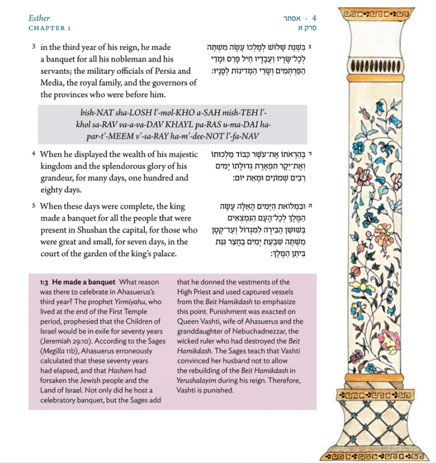It is always amazing to me how there are families who react to unbearable tragedy by creating something deeply meaningful and beautiful for the Jewish people and, indeed, for the world.
This is what the family of Esther Horgen has done. Esther, 52, was brutally murdered by a terrorist on December 20, 2020, while out jogging in the Reihan forest near her home in Tal Menashe, in Samaria.
She died on a beautiful winter day, the kind that happens in climates like Israel, where rather than snow on the ground, there is crisp air, the aroma of leaves and wildflowers, and a bright sun. Esther herself, many people have said, was a ray of light. She was a therapist and an artist who had been living with her husband, Benjamin, and six children in Tal Menashe since 2001. They also have several grandchildren. Esther wanted to make aliya from France since she visited Israel as a child, and finally arrived when she was 18.
Her family has decided to not let her light be extinguished and has created The Israel Bible Scroll of Esther in her memory, in partnership with The Israel Bible series, edited by Rabbi Tuly Weisz. I have perused this new Megilla, and it is unlike any other I have seen. I write that as someone who has studied and taught Megillat Esther and has co-authored and directed an entire biblical musical on Esther.
The Israel Bible Scroll of Esther is unique. It features Esther’s exquisite illustrations, alongside the text of the Megilla in Hebrew and English, and a new commentary from Rabbi Weisz. Some key verses also appear in transliteration, as do the blessings before and after the Megilla, and some additional texts, such as a Prayer for the State of Israel, a Prayer for The Welfare of Israel’s Soldiers and Hatikvah. It also has photographs of Esther on her hikes in that same forest.
Esther’s Megilla includes an essay on the historical background to Purim, a list of the prophets and their locations in the biblical texts, the Hebrew months and their holidays with explanations, a map of the empire of Ahasuerus and, for context, a map of modern-day Israel and its neighbors. The scroll includes blessings from Israel’s President Reuven Rivlin and from Prime Minister Benjamin Netanyahu.
Esther’s husband of more than 30 years, Benjamin Horgen, writes in his heartfelt introduction, “My Esther was blessed with a rare quality — she saw the good in everyone, every place and every moment. She was a deeply spiritual person, who, like the Jewish Sages whose teachings had a profound influence upon her, viewed the world in three realms: Olam, Shana and Nefesh…”
He describes how Esther loved to explore the land of Israel, and the entire world, “From Australia to Ireland, Sweden to India, Hungary to Brazil and many, many more, she loved every place and marveled at the beauties of this world with an infinite appetite.” She loved all the holidays, he writes, but especially Yom Kippur and Purim.
Upon concluding the week of mourning for Esther, the Horgen family went to the site of her brutal murder and planted a tree in her memory so that it would remain a place of peace, not a forest of fear. Proceeds from the sale of this scroll of Esther will go to developing the Esther Horgen Memorial Forest and Park in Tal Menashe.
Benjamin told me in a phone interview, “Both I and my daughter, Avigayil, took an active part in the creation of the Megilla. We are very moved by this project and are grateful to Rav Tuly Weiz and all those involved. I believe that it reflects quite well Esther’s personality in the aspects of her art works. Art was an important part of her life and it was inspired by nature, which she loved.”
I spoke with, Avigail, 21, the fourth of the Horgen children, who helped create the Megilla. She told the publisher about her mother, sent them photos and helped with the technical side. Avigail did her National Service in Hilma — an organization that helps non-profits, hospitals and social services with internet and technological services. Now she is seeking work in hi-tech.
“I was home in Tal Menashe, and around four o’clock, I was looking for my mother and she wasn’t there so I assumed she was outside somewhere, as it was sunny. The truth is I was a bit worried; she was not answering her phone or replying to messages. But I told myself that it is nothing so I distracted myself,” she shared.
“Then my father came home at 6PM after work. He went to look for her and asked me to stay home in case she returns. My neighbor arrived and she said that maybe her husband could locate my mother through her cellphone, through the internet, so he tried, and I tried with all the applications I know, but didn’t succeed in finding her. After the fact we realized that her phone was off and the murderer had removed her sim card.
“Then my siblings came home, and everyone went out looking for her; the security forces came to speak to us and also started to search for her. We slowly understood that something happened to her and that it was intentional. They asked me for her clothes, so the dogs of the rescue unit would be able to look for her. Eventually they found her and came to tell us what happened.”
Avigail described Esther as a mother. “In the Megilla you see that Queen Esther was brave; she goes to Achashverosh though she knew it was the death sentence [for going unsummoned] in order to save the Jews. My mother was also courageous… She wasn’t afraid of the unknown, she asked questions. I think that we need to learn from her, though it was a horrifying event. We have to go forward and not be afraid but to continue our lives with courage.”
The Megilla also includes a poem, originally written as prose, called “Fear,” which Esther wrote in 2015, following a series of terrorist murders, including one in which a boy was stabbed just weeks before his bar mitzvah:
And whenever a situation reminds me of my helplessness,
like seeing a child stabbed a month before his Bar Mitzvah,
our prayers join with his mother’s prayers,
crossing hearts beyond the oceans,
imploring the Divine Mercy that lies dormant within us.
It is from the depths of our helplessness that we encounter Omnipotence.
You have to live it to understand it.
Benjamin writes, “As the tragic abduction of Queen Esther led to the salvation of the entire Nation of Israel… we believe that my Esther’s fate is also the harbinger for future blessings and ultimate goodness for the Jewish people and all of humanity.”
The Jewish people have had many Esthers of every gender — courageous individuals who love and serve their people. As our collective memory of the miracle of Purim approaches, let us pray that the murder of this one will be the last.
The Israel Bible Scroll of Esther can also be ordered as a PDF file.
Toby Klein Greenwald lives in Israel. She is an award-winning journalist, artistic director of Raise Your Spirits Theatre, and the editor-in-chief of WholeFamily.com.
Related posts:
Views: 0
 RSS Feed
RSS Feed

















 February 24th, 2021
February 24th, 2021  Awake Goy
Awake Goy  Posted in
Posted in  Tags:
Tags: 
















